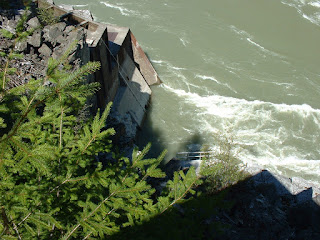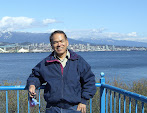 Dear Dave Jones,
Dear Dave Jones,I started ballroom dancing seriously in 2000 kind of my resolution for the new millennium. I met an Englishman through a running club, and asked me whether I was interested in ballroom dancing. I said yes, so I joined him in a ballroom dancing class one day in the afternoon. It was at "Danny's Dance Studio" at E.Pender, Vancouver. I was very surprised when I found out that
 the lesson was given in Chinese, that both of us did not understand. I asked why in Chinese, he just chuckled and said that he could not find other place taught in English. Since I already paid must as well do it. There were 10 students, and we were the only male students. I thought this was my first and my last lesson in ballroom dancing.
the lesson was given in Chinese, that both of us did not understand. I asked why in Chinese, he just chuckled and said that he could not find other place taught in English. Since I already paid must as well do it. There were 10 students, and we were the only male students. I thought this was my first and my last lesson in ballroom dancing.The next time I met him again he said that he found a place where they teach ballroom dancing in English, and there were social dancing afterwards. So he suggested to try there at "Astorino" dancing hall at Venables and Commercial. They give free lessons every Sunday evenings, follow by social dancing after the lesson. The lesson was in English, easier to follow because the lady teacher and her lady partner taught beginner class only as to attract new dancers to the club.
From there on every time I was free on Sunday evenings I went there and learnt ballroom dancing. And the Englishman was always there, a very enthusiastic student dancer. He worked days and free in the evenings, so he joined other dancing lessons in many other dancing clubs. Evidently there were quite a number of dancing halls around Lower Mainland. At the beginning, we stayed only for the lesson and then went home, because we were not confident enough to ask a woman to dance.
There are 2 types of International Ballroom Dancing, Standards and Latins.
There are 5 that are categorized as Standards: Slow Waltz, Tango, Quickstep, Foxtrot and Viennese Waltz. And there are also 5 that are categorized as Latins: Rumba, Cha-cha, Jive, Samba and Paso-Doble. They are enjoyed by people around the world both as socially as recreational activities and competitively as a sport. International Organizing Committee of the Olympic, has recognized ballroom dancing as a competitive sport. But the inclusion of it to the Olympic seemed unlikely, because they decided that the Olympic is becoming too large, and is going to reduce the number of sports instead.
I joined ballroom dancing for the recreational activities only. I usually manage to dance 3 Sundays a month. Each of the above dances Standards and Latins, have many variations in movement choreographed by the teacher depending on the levels. There are levels of Beginner, Bronze I & II, Silver and Gold. To be able to dance, one has to master at least the Beginner level. And at "Astorino" which give Beginner lesson 1 per month, it took me 10 months to learn all the Beginner level of the Ballroom Dancing. From then on, we were not afraid anymore to ask a woman to dance, especially that we knew already some of them during lessons. It is a good idea to have a regular dance partner, probably in the same level of skill too.
Not long after I finished my Beginner level, I met a partner of the same level with me. Needles to say that I enjoyed ballroom dancing more than ever. We partnered for more than a year. But because of her work schedules and mine many times hard to adjust we kind of met less and less until she said that she found someone else as a dancing partner, and that was that. The last time I heard from her that she was getting married. But I still go dancing with some friends, and I am in the Bronze II level now, kind of my maximum level.
Photo shown are me and my partner, a version of "Hockneyizer" photos, which creates a unique photo collage in the style of the artist David Hockney. (See my collections of photos at http://www.flickr.com/photos/van8)
















































